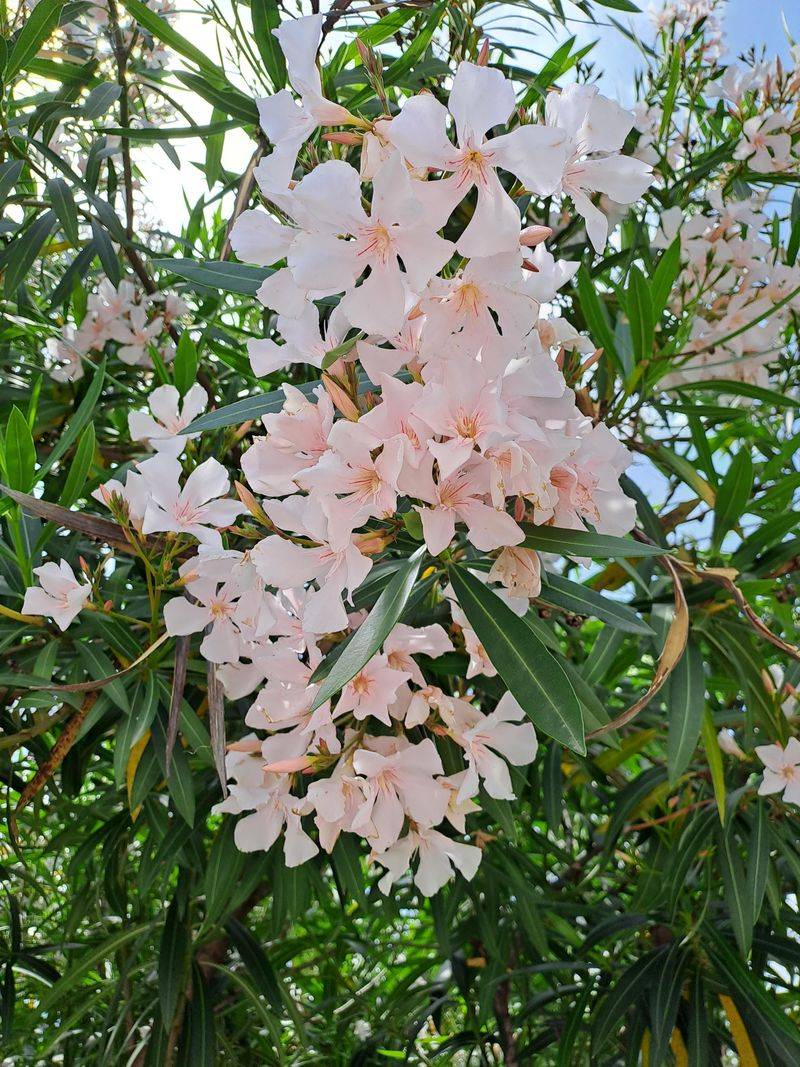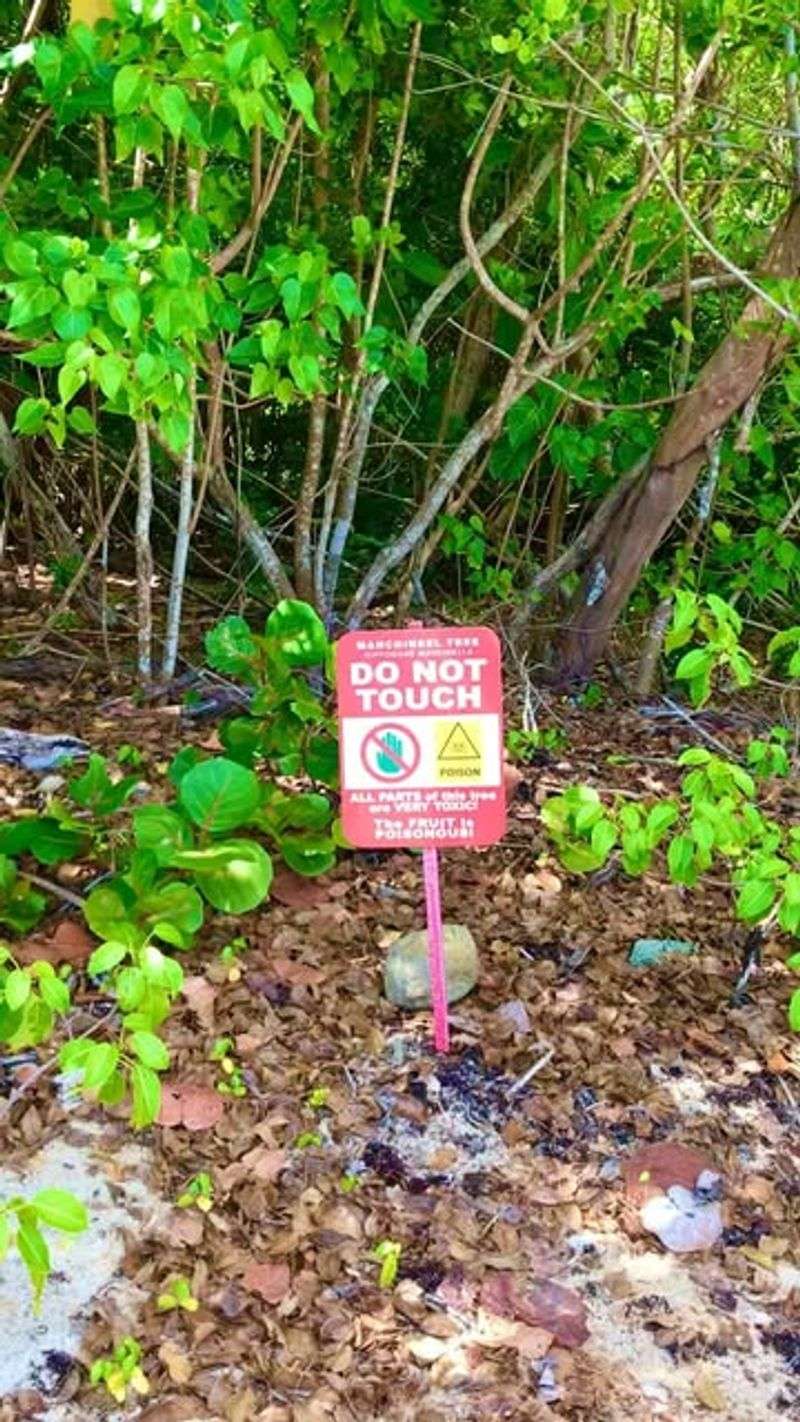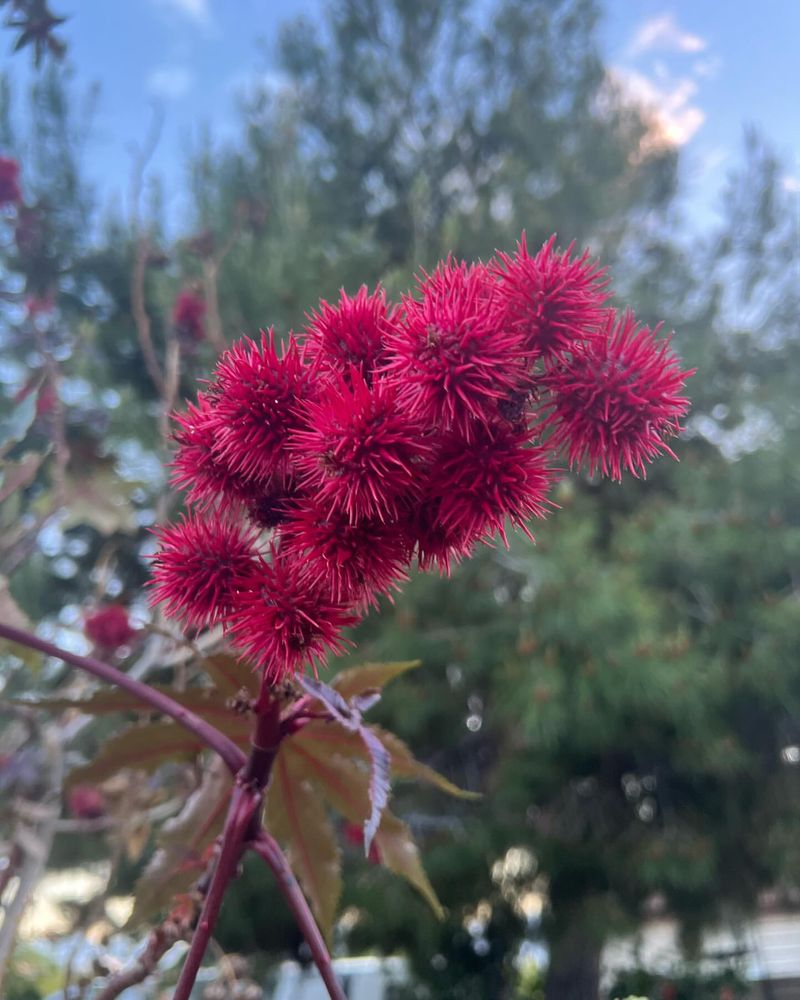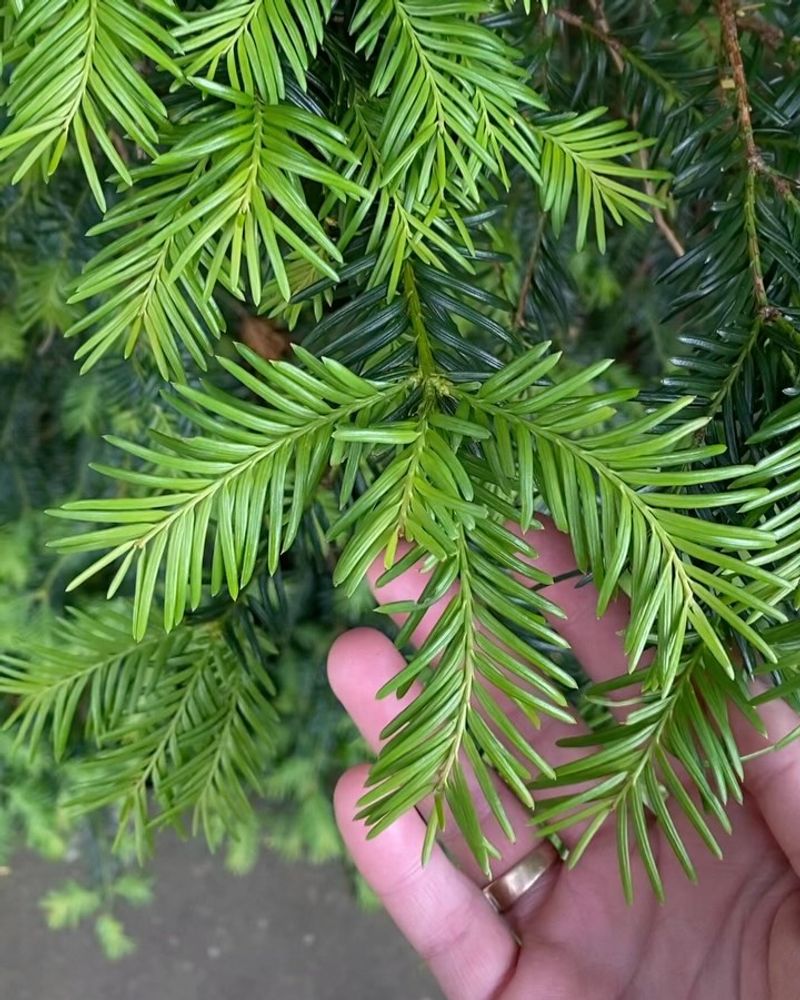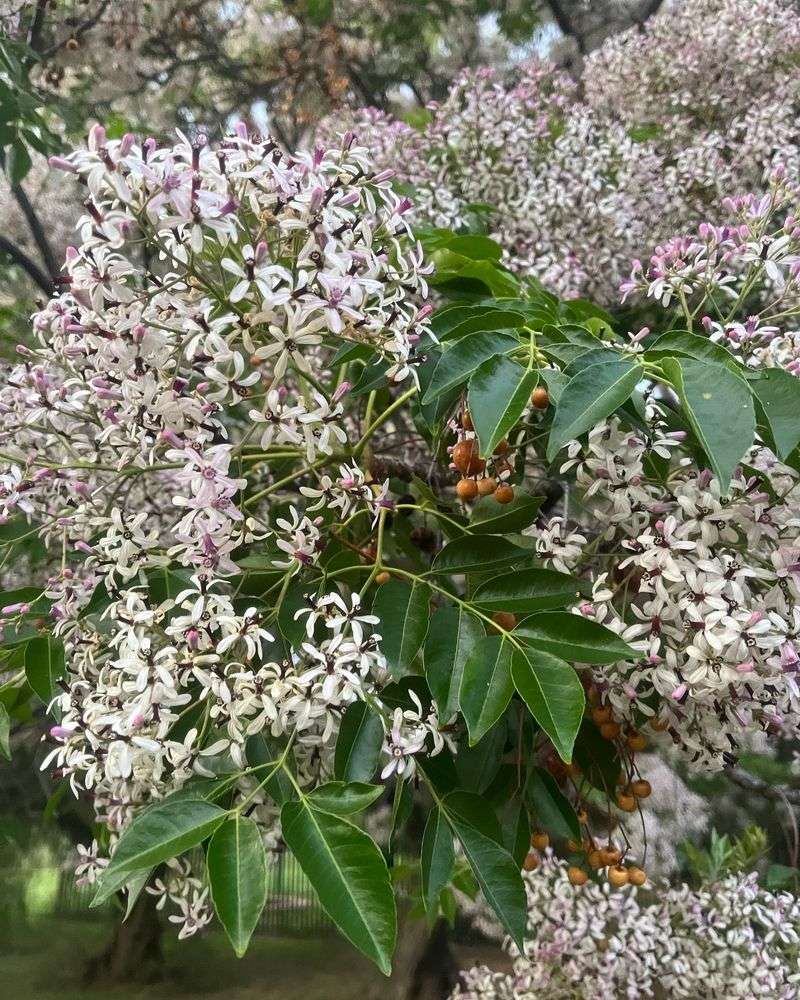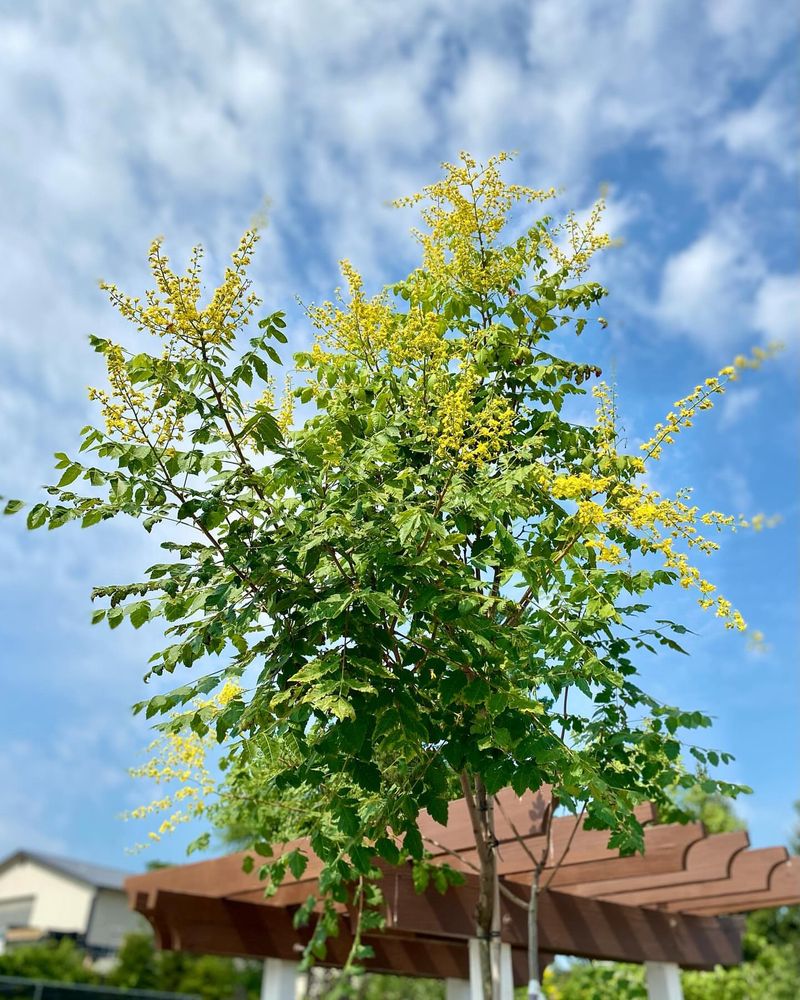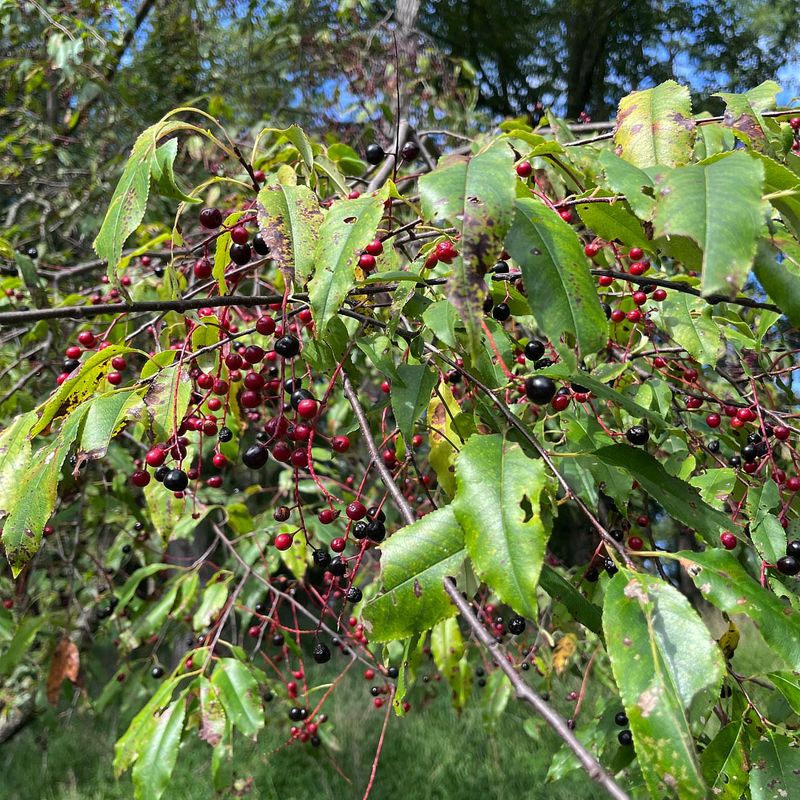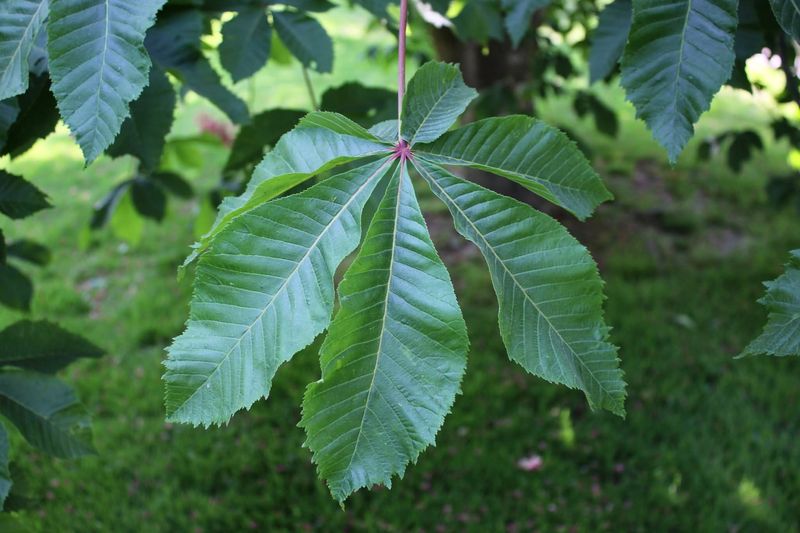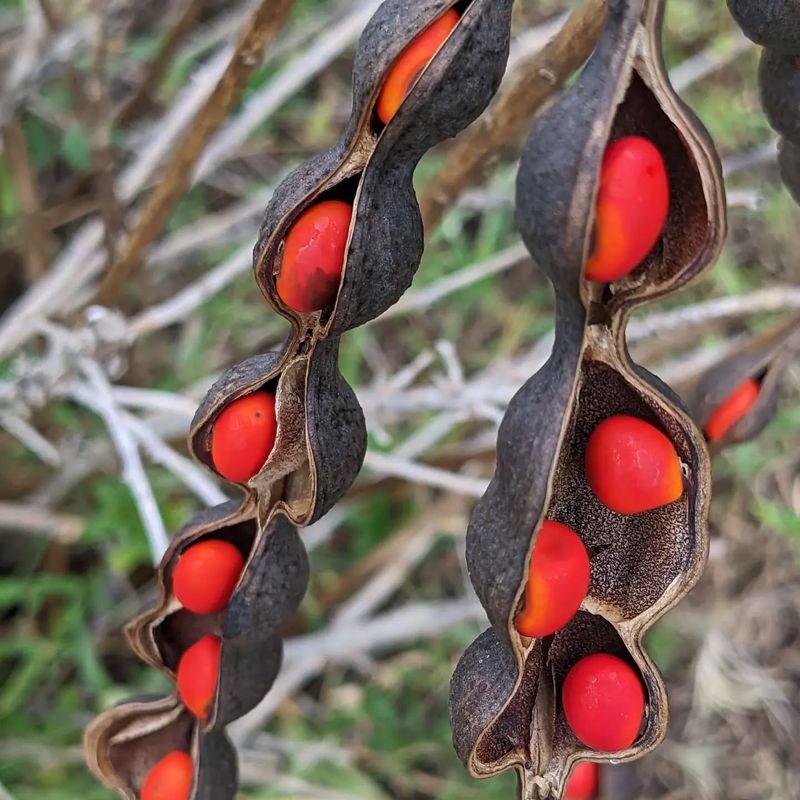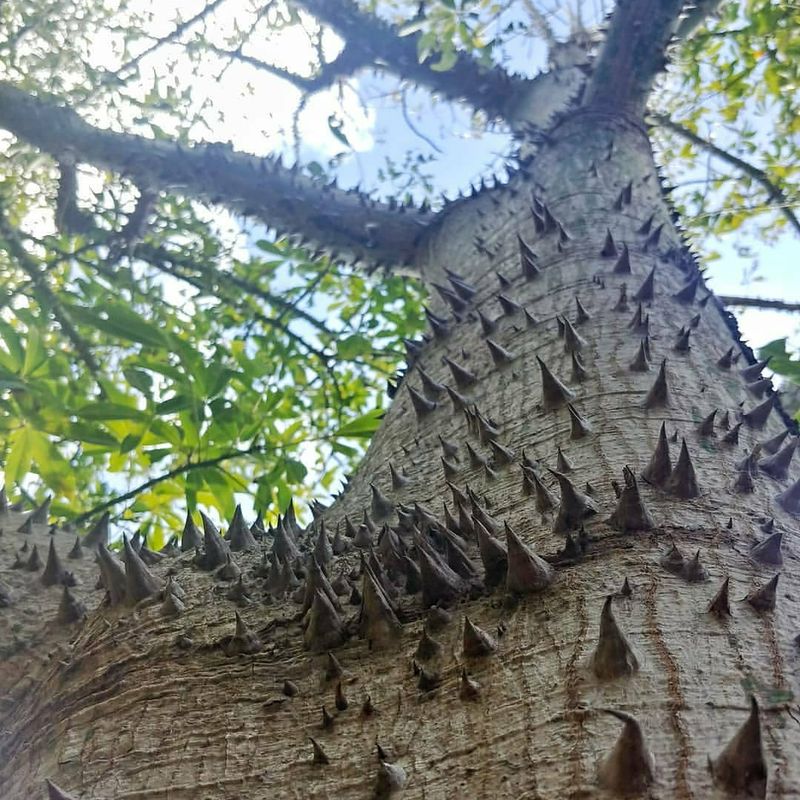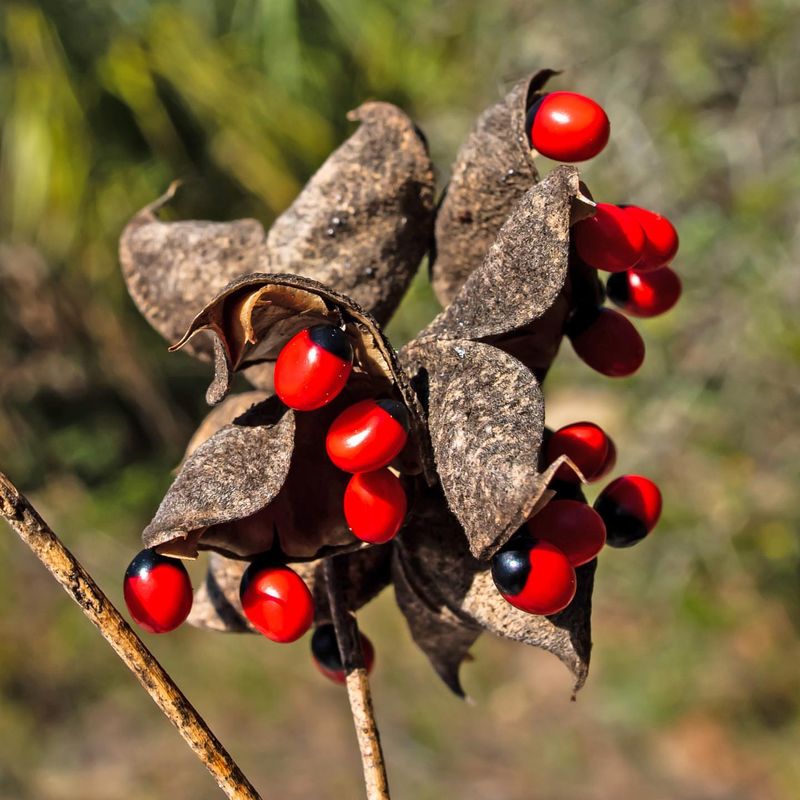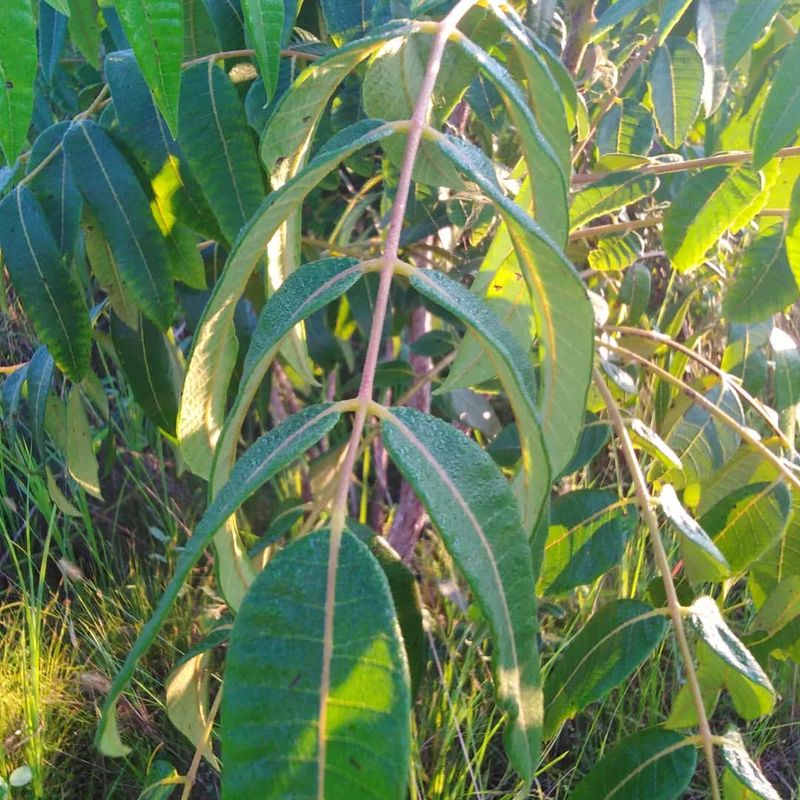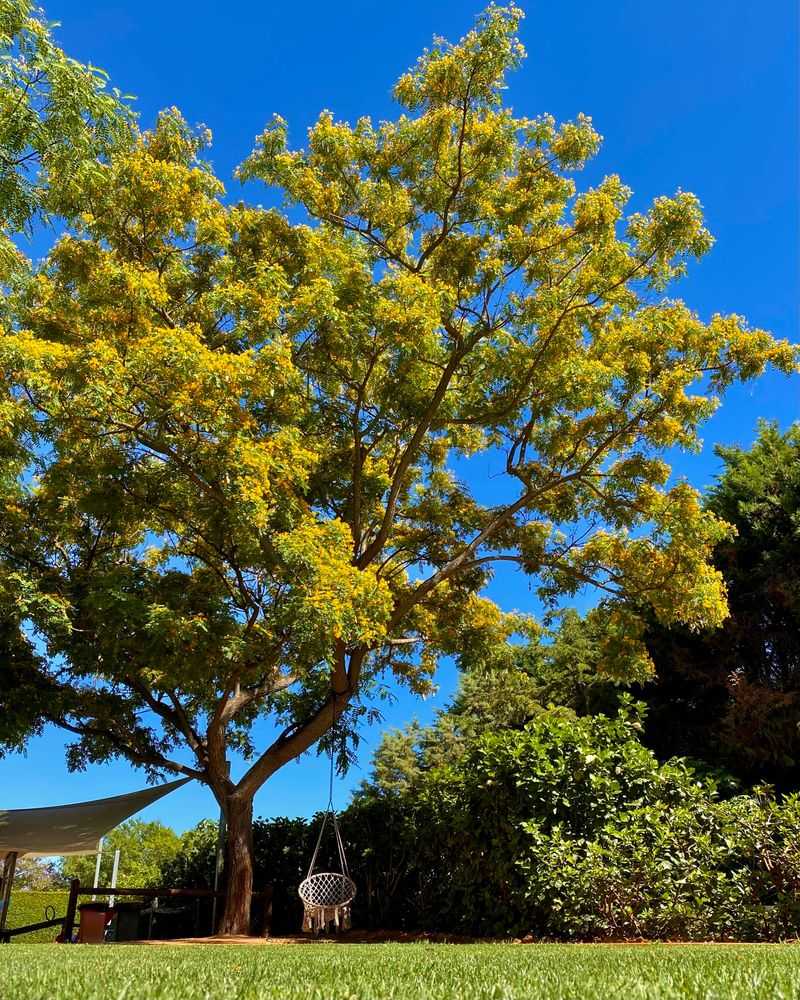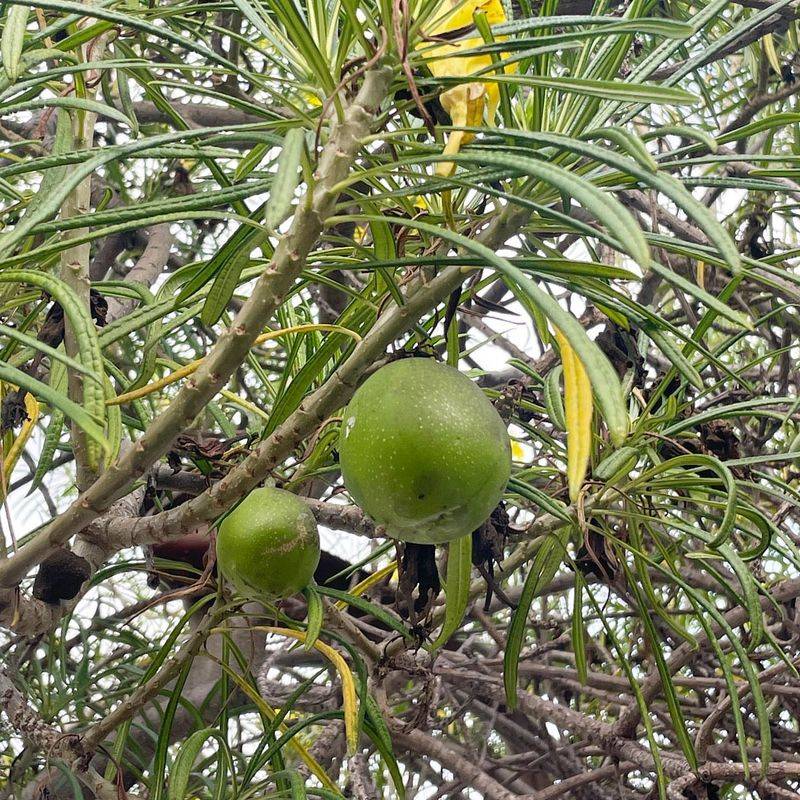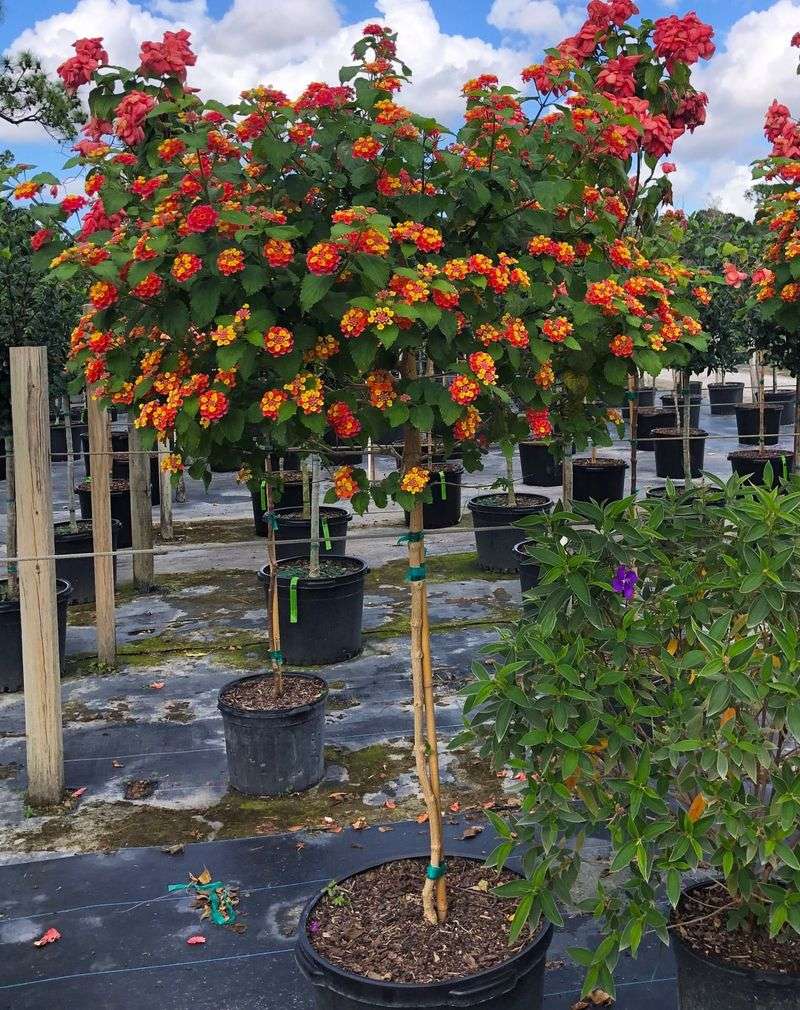Some trees may look gorgeous in Florida yards, but don’t let their beauty fool you—they can cause more trouble than they’re worth.
I learned the hard way when one started dropping messy fruit and attracting way too many bugs. Others can irritate skin, poison pets, or even mess with your soil. It’s wild how something so pretty can be such a backyard bully.
If you’re planting or removing trees, these are the ones you’ll be glad you skipped.
1. Oleander
Every part of this flowering beauty contains cardiac glycosides that can stop a heart. Just a few leaves can be fatal to children playing in Florida backyards.
Many Sunshine State gardeners are unaware that water in which oleander leaves have soaked becomes toxic too. Even burning the branches releases dangerous smoke that shouldn’t be inhaled.
2. Manchineel
Known as ‘the little apple of death,’ this rare coastal tree produces fruit resembling small green apples. Standing under it during Florida rain can cause skin blisters as water drips through its leaves.
Caribbean explorers documented how arrows poisoned with manchineel sap were especially deadly. Some Florida beaches mark these trees with red paint warnings to protect unsuspecting tourists.
3. Castor Bean
Those spiky red seed pods might look interesting, but they contain ricin, one of the world’s most potent plant toxins. Chewing just one seed can be lethal to a child exploring a Florida garden.
Despite its dangers, this plant grows abundantly across the peninsula. Many Florida homeowners unwittingly plant these as ornamentals, attracted to their tropical-looking foliage without knowing the risks.
4. Yew
Those bright red berries might tempt hungry birds and curious kids alike. The seeds inside contain taxine alkaloids that can cause sudden cardiac arrest without warning.
Florida landscapers sometimes use yew for its evergreen qualities in formal gardens. Throughout the state, these ornamental conifers pose a silent threat, as all parts except the red aril surrounding the seed are highly toxic.
5. Chinaberry
Those yellow fruits might look appetizing, but they contain neurotoxins that affect the nervous system. Children across Florida have been poisoned after mistaking them for edible berries.
Originally introduced as an ornamental shade tree, chinaberry has become invasive throughout the state. Florida wildlife officials warn that even the fallen leaves can contaminate water and harm aquatic life.
6. Angel’s Trumpet
Those hanging bell-shaped flowers contain powerful hallucinogens and deadly tropane alkaloids. In central Florida, several hospitalizations occur yearly from accidental exposure or misguided experimentation.
All parts of this dramatic flowering tree can cause dilated pupils, confusion, and even death. Florida poison control centers regularly receive calls about children who’ve merely put the flowers to their lips.
7. Golden Rain Tree
Hidden beneath those lovely yellow flower clusters are compounds that can cause vomiting and diarrhea. Across Florida’s northern counties, these trees drop seedpods that curious pets often investigate.
The seedpods contain saponins that become especially concentrated during drought conditions. Many Florida veterinarians report cases each year of dogs becoming ill after chewing on parts of this common landscape tree.
8. Black Cherry
While the ripe fruits are edible, the wilted leaves and branches contain cyanide compounds that can be fatal to livestock and pets. Throughout Florida’s rural areas, these native trees pose risks to grazing animals.
After storms knock down branches, the wilting process releases hydrogen cyanide. Florida ranchers know to check pastures for fallen black cherry limbs that could poison cattle or horses within hours of consumption.
9. Horse Chestnut
Don’t be fooled by their similarity to edible chestnuts! These contain aesculin, which causes vomiting, weakness, and paralysis. Several Florida children visit emergency rooms annually after confusing them with edible nuts.
The glossy brown seeds emerge from spiky green husks in early fall. Across Florida’s panhandle, these ornamental trees drop their poisonous bounty where unsuspecting hands might gather them up.
10. Coral Bean
Those brilliant red seeds might look like candy to a child, but they contain potent cytisine alkaloids. Native to Florida’s coastal hammocks, this small tree produces bean pods that split open to reveal tempting toxic treasures.
Historically, indigenous Floridians used the seeds as a powerful medicine in minute amounts. Today, emergency room doctors across the state treat several poisoning cases yearly when the bright seeds are mistaken for something edible.
11. Sandbox Tree
Also called the dynamite tree, its fruit explodes when ripe, shooting seeds at 150 mph! The sap causes intense skin irritation and temporary blindness if it contacts eyes.
Found in South Florida landscapes, this unusual tree features a trunk covered with sharp spikes. Florida botanists warn that all parts contain toxins similar to those in poison ivy, making it a particularly hazardous addition to any garden.
12. Rosary Pea
Those striking red and black seeds contain abrin, a toxin even more potent than ricin. Just one chewed seed can kill an adult, making this Florida climber extremely dangerous.
Often used in jewelry making, the seeds have caused fatalities when accidentally pricked by craftspeople. Throughout Florida’s frost-free areas, this vine-like plant grows rapidly, often appearing in yards without being deliberately planted.
13. Poison Wood
Related to poison ivy, contact with any part causes severe dermatitis and painful blisters. Rain washing over leaves can carry the toxic oils onto unsuspecting people standing below.
Florida Keys hikers learn to identify this tree by its reddish peeling bark and dark spotting. Many South Florida landscapers have suffered weeks of misery after removing these trees without proper protection.
14. Pride of Bolivia
Despite its gorgeous pink blooms, this tree contains cardiac glycosides similar to digitalis. Florida gardeners seeking tropical flair often plant it without knowing its toxic properties.
The fallen flowers attract children who might put them in their mouths. Throughout Florida’s southern counties, these trees create a beautiful but potentially dangerous shower of pink blossoms each spring.
15. Yellow Oleander
Often confused with its more common cousin, this tree contains the same deadly cardiac glycosides. The bright yellow flowers and apple-like fruits prove particularly tempting to children.
Several fatal poisonings have occurred in Florida when the seeds were consumed. Throughout the state’s coastal communities, these salt-tolerant trees are planted for their drought resistance, creating an unsuspected hazard in many yards.
16. Lantana
Though often grown as a shrub, lantana can reach tree size in Florida’s climate. The unripe green berries contain pentacyclic triterpenoids that cause liver damage if ingested.
Children are particularly vulnerable to these seemingly innocent berries. Throughout Florida’s growing zones, lantana escapes cultivation and forms dense thickets of colorful flowers hiding their toxic fruits.


